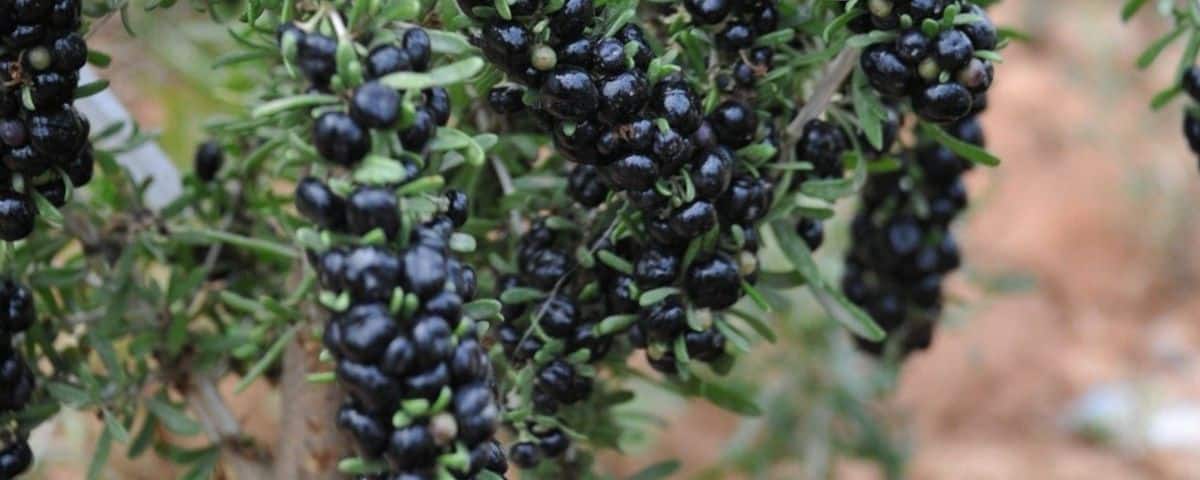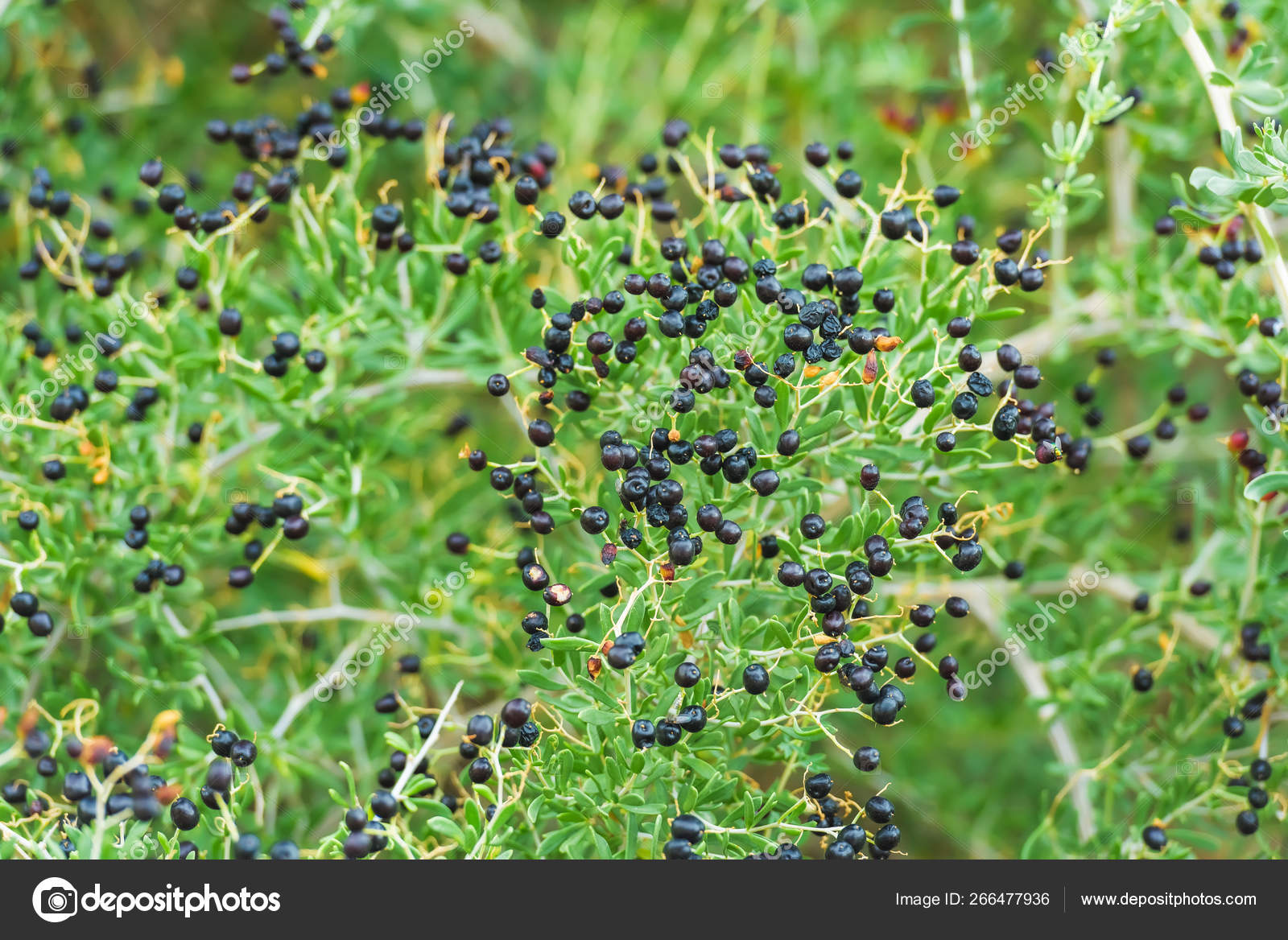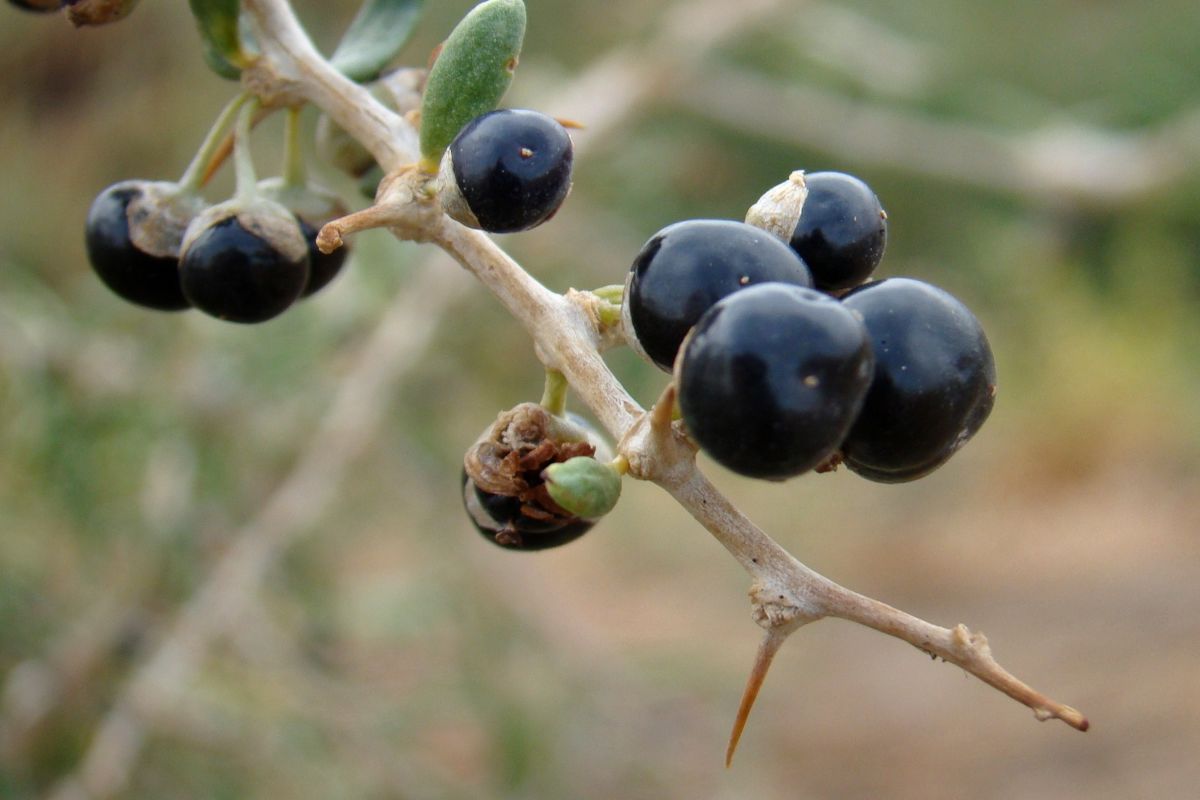The black goji berry plant, a botanical enigma, invites us on an extraordinary journey through the realms of nature’s wonders. Its distinctive physical traits, cultivation secrets, and remarkable nutritional prowess paint a captivating portrait that will leave you spellbound.
From its striking appearance to its profound health benefits, the black goji berry plant has captivated cultures for centuries. Join us as we delve into the fascinating world of this extraordinary botanical treasure.
Plant Characteristics

The black goji berry plant, scientifically known as Lycium ruthenicum, is a deciduous shrub belonging to the nightshade family, Solanaceae. It is native to the temperate regions of Eurasia, including parts of Europe, Asia, and North America.
Size and Shape
The black goji berry plant is a relatively small shrub, typically reaching a height of 1-3 meters (3-10 feet) and a spread of 1-2 meters (3-6 feet). It has a bushy, upright growth habit with multiple stems emerging from the base.
Leaves
The leaves of the black goji berry plant are simple, arranged alternately along the stems. They are elliptical to ovate in shape, with a smooth margin and a pointed tip. The leaves are typically 2-5 centimeters (0.8-2 inches) long and 1-3 centimeters (0.4-1.2 inches) wide. They are dark green in color, with a slightly paler underside.
Flowers
The black goji berry plant produces small, bell-shaped flowers that bloom in clusters of 2-5 flowers. The flowers are typically purple or lavender in color, with five petals that are fused at the base. They have a short, slender tube and a spreading limb. The blooming period of the black goji berry plant is from early to mid-summer.
Fruit
The fruit of the black goji berry plant is a small, round berry that is typically 0.5-1 centimeter (0.2-0.4 inches) in diameter. The berries are black or dark purple in color and have a slightly wrinkled surface. They are juicy and have a sweet and tart flavor. The ripening time of the black goji berry fruit is from late summer to early fall.
Cultivation and Care

Black goji berry plants thrive in well-drained soil with a pH between 6.0 and 7.5. They require full sun to partial shade and regular watering, especially during hot and dry weather. Propagation can be done through cuttings or seeds. Cuttings should be taken from healthy, mature plants in spring or fall. Seeds can be sown indoors in late winter or early spring and transplanted outdoors after the last frost. Pruning is essential to maintain plant shape and encourage fruit production. Remove dead or diseased branches, and prune back new growth to promote branching and fruit set.
Propagation
Black goji berry plants can be propagated through cuttings or seeds. Cuttings should be taken from healthy, mature plants in spring or fall. Seeds can be sown indoors in late winter or early spring and transplanted outdoors after the last frost.
Pruning
Pruning is essential to maintain plant shape and encourage fruit production. Remove dead or diseased branches, and prune back new growth to promote branching and fruit set.
Nutritional Value and Uses: Black Goji Berry Plant

Black goji berries are a nutritional powerhouse, offering an impressive array of vitamins, minerals, and antioxidants. They are particularly rich in vitamin C, containing nearly twice the amount found in blueberries. Vitamin C is essential for immune system function, collagen production, and antioxidant protection. Black goji berries also contain significant amounts of vitamins A and E, which are important for vision, skin health, and cognitive function.
Mineral Content, Black goji berry plant
Black goji berries are a good source of several essential minerals, including potassium, calcium, magnesium, and iron. Potassium is crucial for maintaining fluid balance, muscle function, and blood pressure regulation. Calcium is essential for strong bones and teeth, while magnesium supports muscle and nerve function. Iron is necessary for red blood cell production and oxygen transport throughout the body.
Antioxidant Activity
Black goji berries are renowned for their high antioxidant content, primarily due to the presence of anthocyanins, flavonoids, and carotenoids. These antioxidants help protect cells from damage caused by free radicals, which are unstable molecules that can contribute to aging and chronic diseases. Research has shown that the antioxidant activity of black goji berries may have several potential health benefits, including reducing inflammation, improving cognitive function, and protecting against certain types of cancer.
Traditional Uses
In traditional Chinese medicine, black goji berries have been used for centuries to support liver and kidney health, improve vision, and enhance overall vitality. They are also believed to have anti-aging and immune-boosting properties. In recent years, black goji berries have gained popularity in Western cultures as a superfood due to their nutritional value and potential health benefits.
